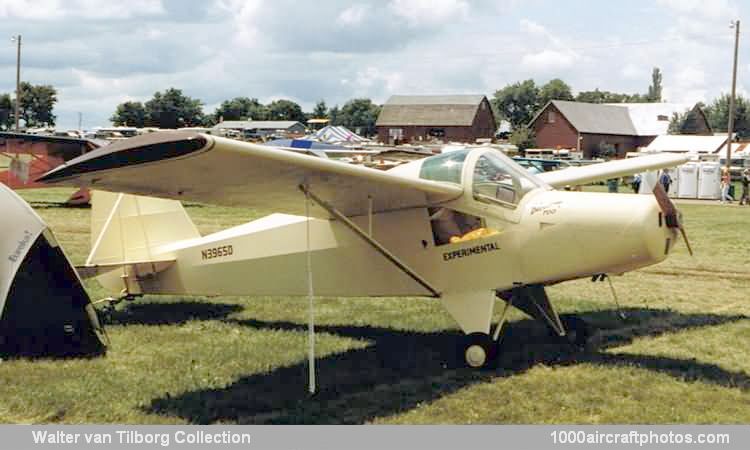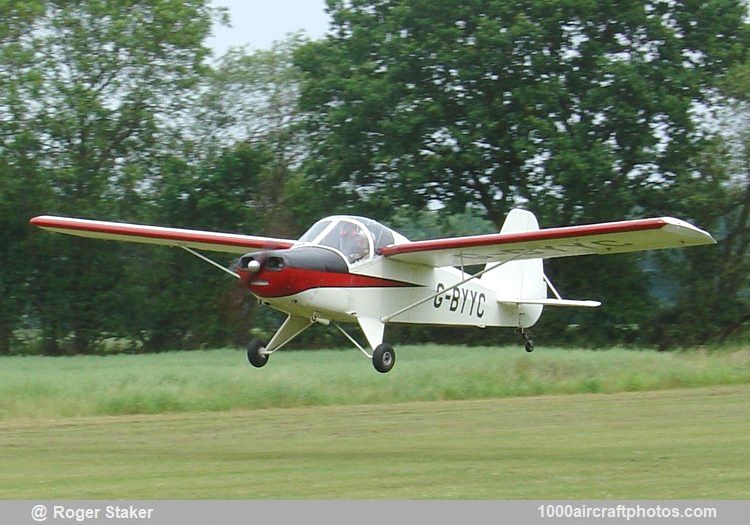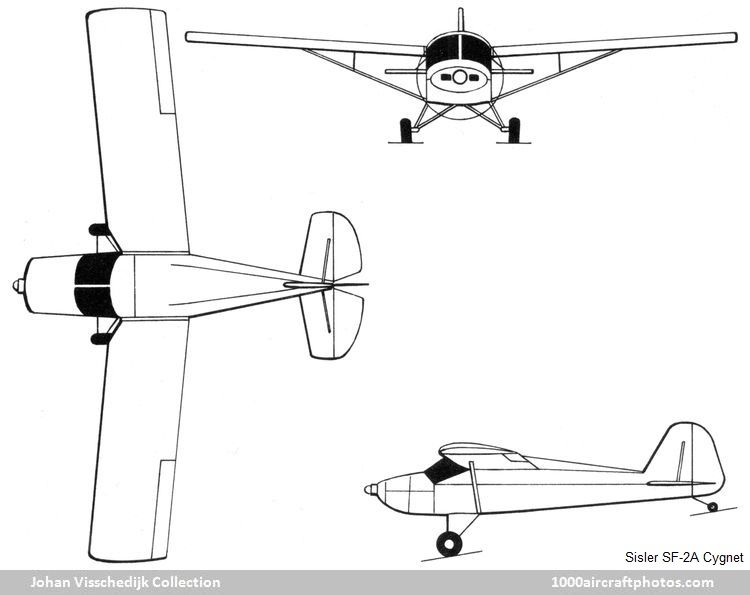The first aircraft Sisler designed and built was the SP.1 Pipit two-seater (N154S c/n 111) in 1970, by July 1977 it had been sold to John E. Lindquist of nearby Webster. By December 1989 it was registered to Joseph Pescetta of Springfield, Massachusetts, on August 8, 1996 it was registered to Edward J. Kovac of East Greenwich, Rhode Island. The registration was cancelled on October 15, 2012, reasoned as 'Expired'. Subsequently the Pipit was obtained by the Quonset Air Museum at Quonset State Airport, North Kingstown. Unfortunately on March 14, 2015 a small part of the museum roof collapsed by snow and ice. The aircraft collection was not damaged, but officials condemned the building and the museum was closed. The aircraft were transferred to other museums, however, the fate of the Pipit is unknown.
The Pipit was followed by the side-by-side two-seat SF-2 Whistler light aircraft. Registered to Sisler as N5549 (c/n 111 as well) and powered by a 62 hp 112 cu.in (1,834 cu.cm) Volkswagen modified motorcar engine, driving a two-blade propeller, it was first flown on July 25, 1973. It gained the 'Outstanding Design Contribution' award at the 1973 EAA Fly-in at Oshkosh. Unfortunately the prototype was lost on June 15, 1974. While taking off from Faribault Airport, Minnesota for a 25 mls (40 km) flight to Lakeville, the pilot (sole occupant, with only two hours on the aircraft) failed to obtain/maintain flying speed and the aircraft stalled. The pilot did not survive the following crash.
Sisler subsequently improved the SF-2 Whistler design, then known as the SF-2A Cygnet, making it easier to build, aerodynamically cleaner and lighter. It was first flown in 1976. Following is the SF-2A Cygnet prototype data:
Wings: Strut braced shoulder-wing monoplane of all-wood construction, swept forward 5° from roots. Wing section NACA 3413. Dihedral 3° 30'. Each wing consists of a main spar, light front and rear auxiliary spars, six plywood ribs, some stringers, geodetic upper and lower coverings of spruce strips, and an overall Dacron covering. Fabric covered wooden ailerons, without tabs. No flaps.
Fuselage: Conventional welded chrome molybdenum steel tube structure, Dacron covered.
Tail unit: Conventional strut braced unit, comprising tailplane and elevators, vertical fin and rudder. Structure similar to that of fuselage. Trim tab in port elevator. Ground adjustable tab on rudder.
Landing gear: Non-retractable steerable tailwheel type. Two side Vs and half axles of welded steel tube. Bungee shock absorption. Mainwheel tires size 5.00-5 on prototype; size 6·00-6 tires or skis optional.
Power plant: A 62 hp 112 cu.in (1,834 cu.cm) Volkswagen modified motorcar engine, driving a two-blade propeller. Fuel capacity 15 gal (57 l).
Accommodation: Two seats side by side in enclosed cockpit. Windscreen made up of two door panels, hinged on centerline. Baggage capacity 50 lb (23 kg).
System: Prototype had no electrical system, but lightweight alternator and battery were optional.
Span: 30 ft 0 in (9.14 m)
Length: 19 ft 0 in (5.79 m)
Height: 5 ft 10 in (1.78 m)
Wing area: 124.8 sq.ft (11.60 sq.m)
Weight empty: 585 lb (265 kg)
Loaded weight: 1,100 lb (499 kg)
Max speed: 108 mph (174 kmh)
Cruise speed: 87 mph (161 kmh) at 8,000 ft (2,440 m)
Climb: 580 ft (177 m)/min


